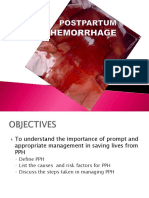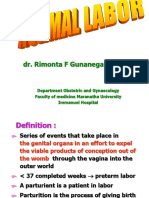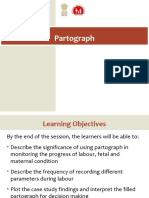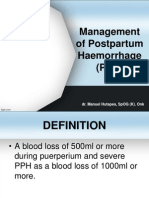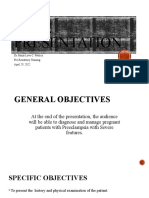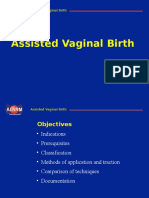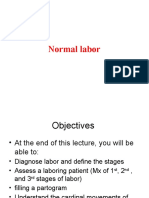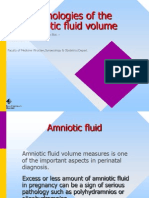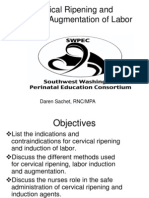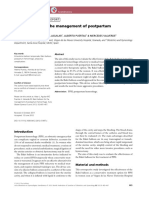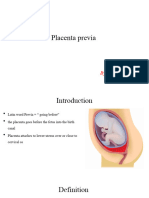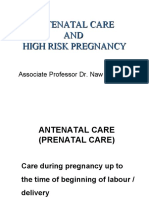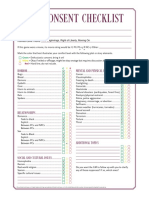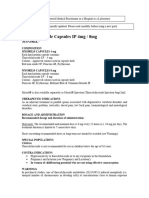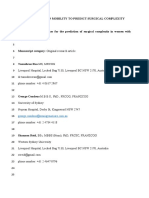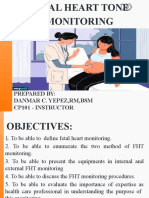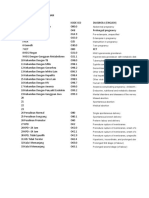Management of Post Partum Hemorrhage (PPH)
Blood loss>500ml after vaginal child birth/>1000ml after C-section/or any loss
which deteriorates maternal condition
Patient received in Obstetric Triage of Emergency Room
Initial Assessment: • Start IV fluids (0.9% Normal Saline/Ringers Lactate)
• A quick history with simultaneous assessment and initial management • Arrange and transfuse blood, when indicated as soon as possible
• Ascertain the cause • Give inj oxytocin 10 IU IM (if not given after delivery)
• Continue with the steps of facility-based management (enumerated below) • 20 IU of oxytocin in 1000ml of RL/NS or 10 IU of oxytocin in 500ml of RL/NS @
40-60 drops/mt
Facility based management • Tranexemic acid 1gm in 10ml NS IV over 10 mins (100 mg/min); repeat another
• Call for help (mobilize all available personnel) dose after 30 min of first dose if required
• Assess Airway Breathing and Circulation (ABC), check vitals Monitor
• Secure 2 wide bore IV lines (16/18 G) • Pulse rate, blood pressure, respiratory rate, temperature and bleeding per vaginum
• Collect blood for investigation: blood group and cross match, complete blood • Catheterize and monitor urine output until the woman is stable (normal output
count, blood coagulation profile-bedside clotting and clot retraction time >30 ml/hr)
Check if placenta is expelled or not
Placenta is not expelled (Retained placenta) Placenta is expelled
• Continue oxytocin drip (Total oxytocin not to exceed 100 IU in 24 hrs) • Examine placenta and membranes for completeness
• If uterus is contracted, attempt controlled cord traction • Palpate the uterus per abdomen for the consistency. Rule out inversion of
• Give IV antibiotic or as per Protocol uterus
• Do manual removal of placenta under anaesthesia if required • Conduct uterine massage and continue oxytocin drip (Total oxytocin not
to exceed 100 IU in 24 hrs)
Uterus contracted/relaxed
Uterus well contracted, examine for Genital Trauma (Traumatic PPH)
• Look for cervical/ vaginal/ perineal tear - repair it Uterus is not well contracted/ soft and traumatic causes
• Continue Oxytocin drip excluded (Atonic PPH)
• If scar dehiscence or uterine rupture is suspected than shift to OT for laparotomy Continue uterine massage and oxytocin drip (total oxytocin
not to exceed 100 IU in 24 hrs)
• If uterus is still relaxed and bleeding uncontrolled
– Tablet Misoprostol (PGE1) 800 microgram sublingual/per
rectal
• If uterus is still relaxed and bleeding uncontrolled
Bleeding is uncontrolled – Inj Carboprost (PGF2 alfa) 0.25mg IM (contraindicated
• Arrange for blood transfusion in asthma)/ inj. Methyl ergometrine 0.2 mg IM/IV slowly
• Apply non-surgical compression: (contraindicated in hypertension, severe anemia, heart
disease)
- Bimanual uterine compression
- Uterine balloon tamponade (Condom over Foley’s catheter)
- External aortic compression
If no response
Check bleeding
• Shift to OT for surgical compression
• May consider Uterine Artery Embolization (UAE) in select cases such as with coagulopathy if
facilities available
If no response
• Systemic devascularization: uterine artery, ovarian artery, internal iliac artery ligation Bleeding is controlled
If no response • Repeat uterine massage every 15 min for first 2 hours
• Hysterectomy total or subtotal (timely hysterectomy) • Check vitals and bleeding per vaginum every 15 mins for 1st
Refer to higher center (with nearest distance) if above facilities are not available: one hour followed by every 1 hr for next 4 hours and then
every 6 hourly for next 24 hr
Continue oxygen with oxytocin drip and pressure to arrest bleeding by balloon tamponade/vaginal
packing/or external aortic compression during transfer • Continue Oxytocin infusion (Total Oxytocin dose not to
exceed 100 IU in 24 hrs)
• Closely monitor vitals and bleeding during transport
Follow up
• If available, consider use of well-equipped ambulance services with trained staff for emergency
interventions/resuscitation during transport • Checkup and treat for anemia after bleeding is stopped for
24 hours
Maintenance Dose of Uterotonics Map government and private centers/hospitals providing surgical management of
PPH for prompt referral and treatment to the nearest available center to avoid delay
Whenever needed:
in reaching the facility – The list and contact details of nearest centers should be
• Inj Ergometrine can be repeated every 15 min. {0.2mg IM} (Max 5 doses = 1mg)
displayed for prompt reference
• Inj Carboprost can be repeated every 15 min. {0.25mg IM} (Max 8 doses = 2mg)
Follow complete referral protocol: Prior communication to referral facility is a must with
complete details of woman, management provided, confirm availability of space and
requisite staff, etc.
Version 2022
